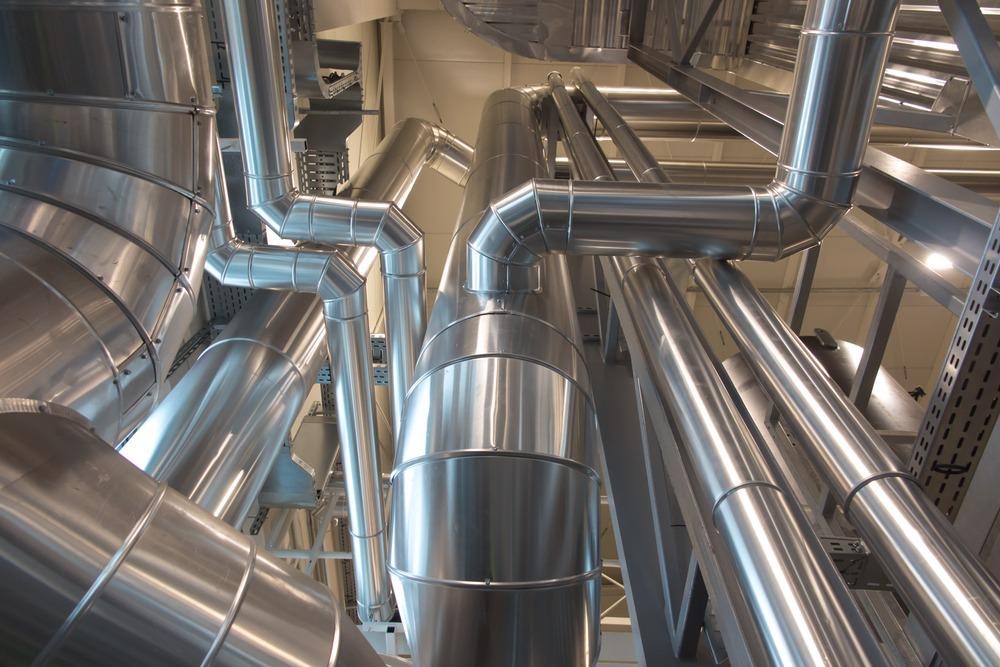Monitoring gases is mandatory owing to regulations, and flue gas analysis is utilized for both efficiency and emissions control. Monitoring flue gases has become inexpensive, simpler, and more prevalent as a result of technological advancements.

Image Credit: DyziO/Shutterstock.com
What Is Flue Gas Analysis?
The term "flue" refers to the long pipes that are used to discharge exhaust gases, and are commonly found as chimneys, ducts, or simple pipes. The gases ejected by flues have a wide range of compositions, based on the operations taking place within each facility. Users may conduct a flue gas analysis to detect the concentration of different gases and regulate the burner on a boiler to ensure optimal performance.
Flue gas analysis is essential for evaluating air-to-fuel ratios in combustion for best efficiency. The kind of fuel consumed and the combustion circumstances at each plant define the particular composition of flue gas. For combustion to occur efficiently, whether a facility employs solid, liquid, or gaseous fuels, an appropriate balance of fuel and air must be reached.
Crucial Flue Gas Analysis
It is also crucial to detect contaminants in emissions. Nitrogen dioxide (NO2), sulfur dioxide (SO2), nitric oxide (NO), carbon monoxide (CO), and other pollutants are all measured using a flue gas analyzer. Following detection, equipment can treat flue gas using scrubbers and/or chemical processors for removing contaminants, thus enhancing sustainable development and satisfying EPA and other organizations' regulations.
While working in a fuel-burning environment, it is critical to use the best flue gas analyzers available. The finest portable flue gas analyzers can identify practically any pollutant and make the necessary modifications to obtain the best fuel-to-air ratios in a variety of applications, including boilers, heaters, furnaces, and engine exhaust.
Gas Analysis Technique
Flue gas analysis is done by inserting a probe into the flue of a boiler, furnace, or other appliance between the last heat exchanger and draft diverter, or indeed any source of make-up air that may enter the flue that did not flow through the combustion process. This is referred to as an "in-situ" examination.
Most probes presently are either electrochemical or infrared, based on the gas being analyzed. Certain values are computed based on gases which are measured and afterward factored based on input fuel qualities. Not all gases are measured directly by all meters; some values are derived based on gasses that are measured and thereafter factored depending on the input fuel characteristics.
Other Flue Gas Techniques
In-situ probes are not used by all flue gas analyzers. Some devices deliver flue gases towards the instrument through a tube. This is particularly common with continuous monitoring devices and extremely big systems, where reaching a location in the flue to insert a probe or locate a portable meter is difficult.
To prevent the product being measured from escaping, the tube might have to be heated. To avoid moisture damage to a probe, the flue gases should be cooled and dried in other circumstances. Instrumentation employs a 'Peltier Cooler,' an electrochemical device that creates a cold surface that condenses any moisture in the flue gas before it enters the measurement sensor.
Limitations of This Technology
Probes and sensors do not survive indefinitely; certain electrochemical sensors are destructed during the measurement process, while others wear out over time due to exposure to heat and corrosive gases. As a result, infrared sensors are becoming increasingly common for a variety of applications.
However, these are more costly, are not necessarily as precise, and are impacted by dirt, fogged lenses, as well as other application concerns that limit where and how they may be utilized. Most of these problems will be reduced or eliminated if steady progress is made.
After analyzing, transporting, and purifying sample flue gases, moisture is eliminated and the samples are delivered to further processes or a safe vent. If particle matter is present in the flue gas, this adds significant expense to the system as well as additional system maintenance.
New Advancement in Flue Gas Analysis
Measuring flue gas or burning process parameters (such as CO) is a difficult task for both the measuring device and the user. This is because, in addition to "traditional" responsibilities like commissioning and maintaining all sorts of heating systems, unique projects arise. Not only does this need specialized knowledge, but it also necessitates specialized measurement technology.
A significant flue gas analyzer is a further development of the well-known exhaust gas measurement equipment from Testo, and it offers the same precision and dependability. The most significant distinction is that the newest flue gas analyzer is controlled entirely through an application on a smartphone or tablet.
The application may fully demonstrate the operations of the exhaust gas measuring device as well as the presentation of measurement data. To provide an all-around sealed housing, extra-durable features have been included. The program allows for totally paperless documentation of measurement data, as well as quick e-mail delivery of reports.
References
Energy Solutions Center. (2020). Flue Gas Analysis. http://cleanboiler.org/flue-gas-analysis
Power. (2010). Flue Gas Analysis as a Furnace Diagnostic Tool. https://www.powermag.com/flue-gas-analysis-as-a-furnace-diagnostic-tool/
Disclaimer: The views expressed here are those of the author expressed in their private capacity and do not necessarily represent the views of AZoM.com Limited T/A AZoNetwork the owner and operator of this website. This disclaimer forms part of the Terms and conditions of use of this website.